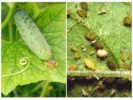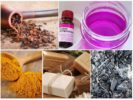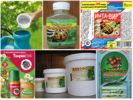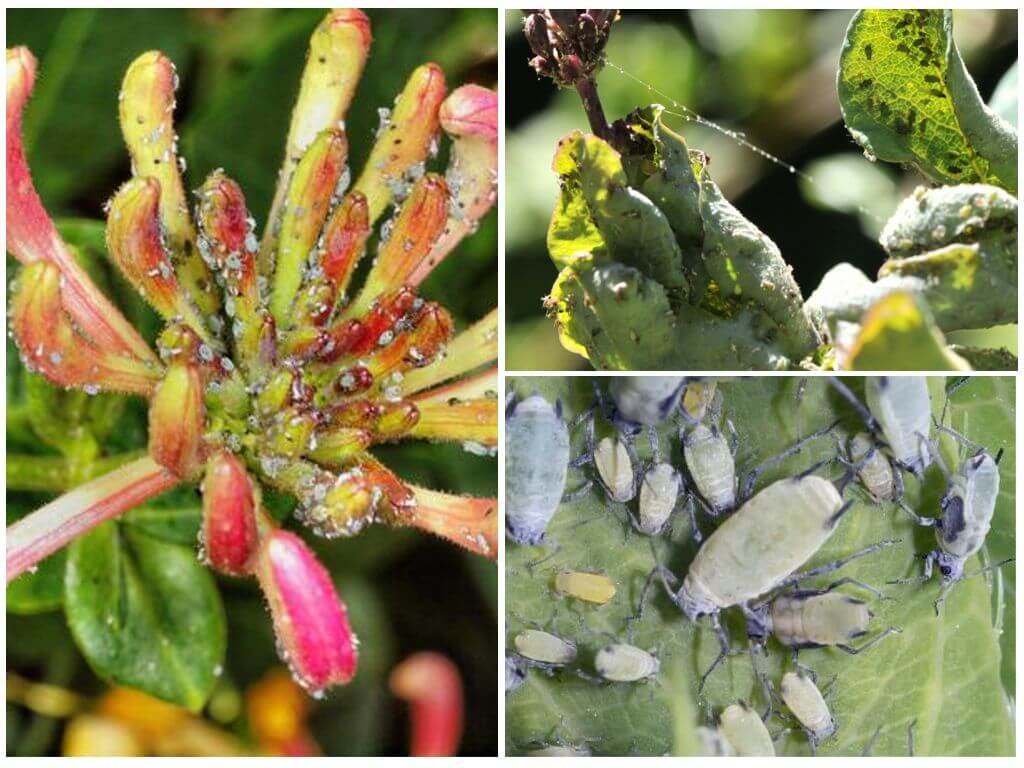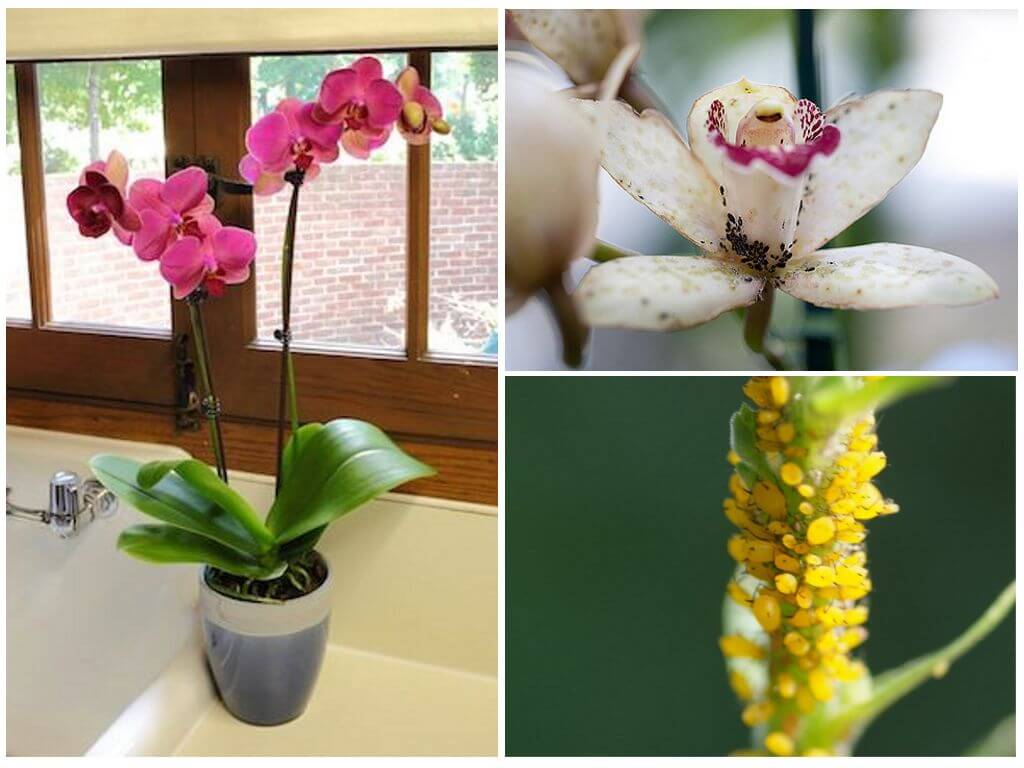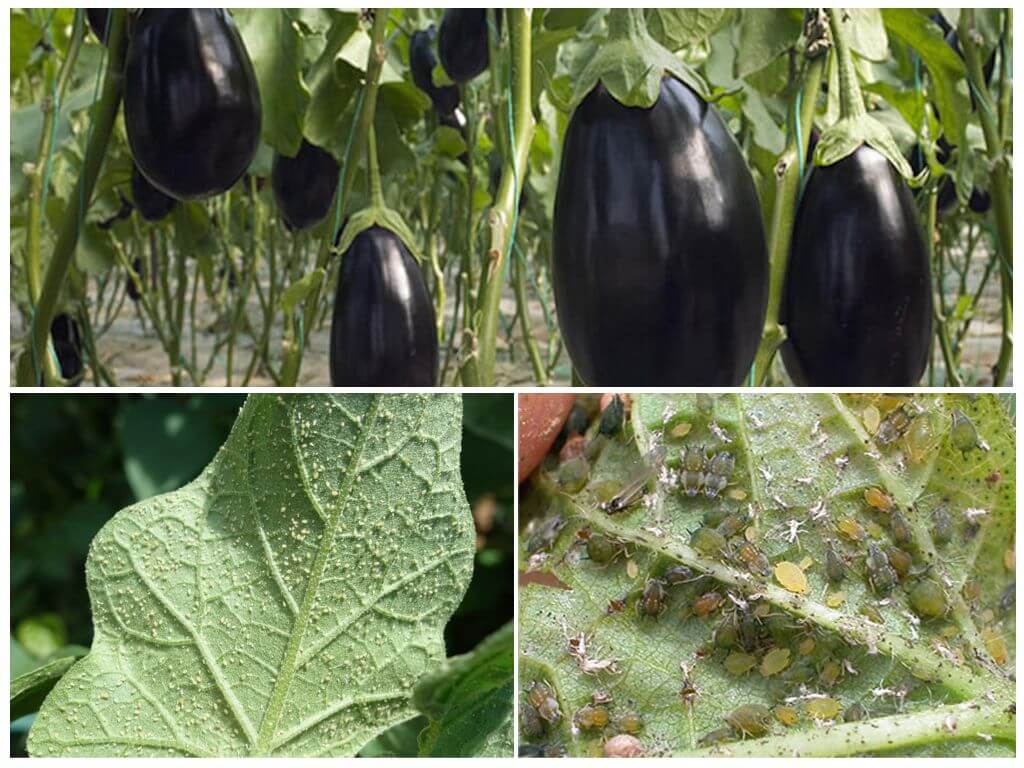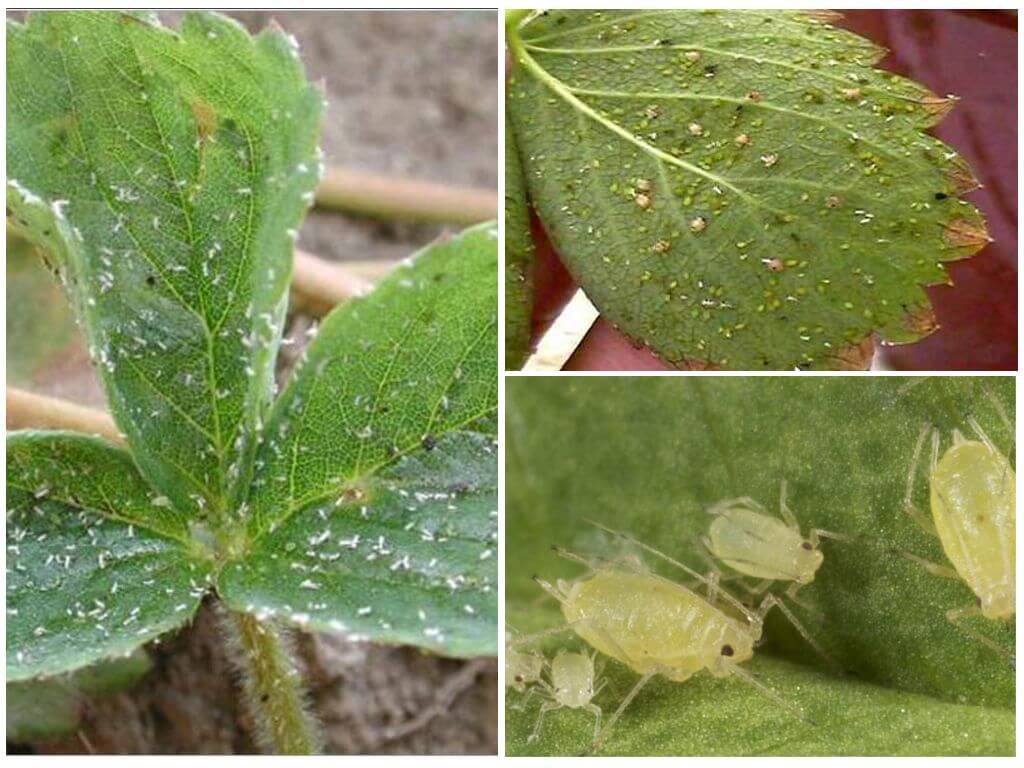- Aphids on cucumbers
- Herbal remedies for aphids
- Fighting aphids at home
- Biological and chemical pesticides
With the beginning of the garden season, all summer residents will get into trouble not only with growing crops, but also with the fight against various pests. In the greenhouse and in the garden, planting cucumbers is often damaged by aphids. How to deal with aphids on cucumbers using folk methods and chemicals, it will be interesting to learn to all gardeners.
Species of parasites on plants
In European countries, scientists discovered about 1 thousand. species of aphids - pests of plants that feed on their juices, and also spread various diseases. This is a small insect 1-2 mm in size, having a different color: yellow-straw, green, brown or black. With the help of a proboscis, she punctures a leaf and sucks useful juices from it. They live in large colonies, so in a few days they can destroy almost the entire leaf part of the plant.
What does aphid look like on cucumbers? This is an accumulation of small insects of different colors, often green, which sit on cucumbers below the leaves.
Important!
The main enemy of aphids - ladybugsthat are capable of eating more than 50 individuals per day, so they can be launched to control the pest in the greenhouse. Some insects like lacewing, gall midges, and wasps also love to eat it.
Aphids on cucumbers in a greenhouse can cause irreparable harm to the plants themselves, their ovaries and flowers in a short time, as a result of which fruiting stops. She poses a particularly great threat, settling on cucumber seedlings. Allocating a sweet pad, parasites attract some insects. Their ants are especially fond of arranging symbiosis with pests: dragging them to other plants, gradually infecting everything around them. In winter, ants give refuge to the “breadwinners” in their colony.
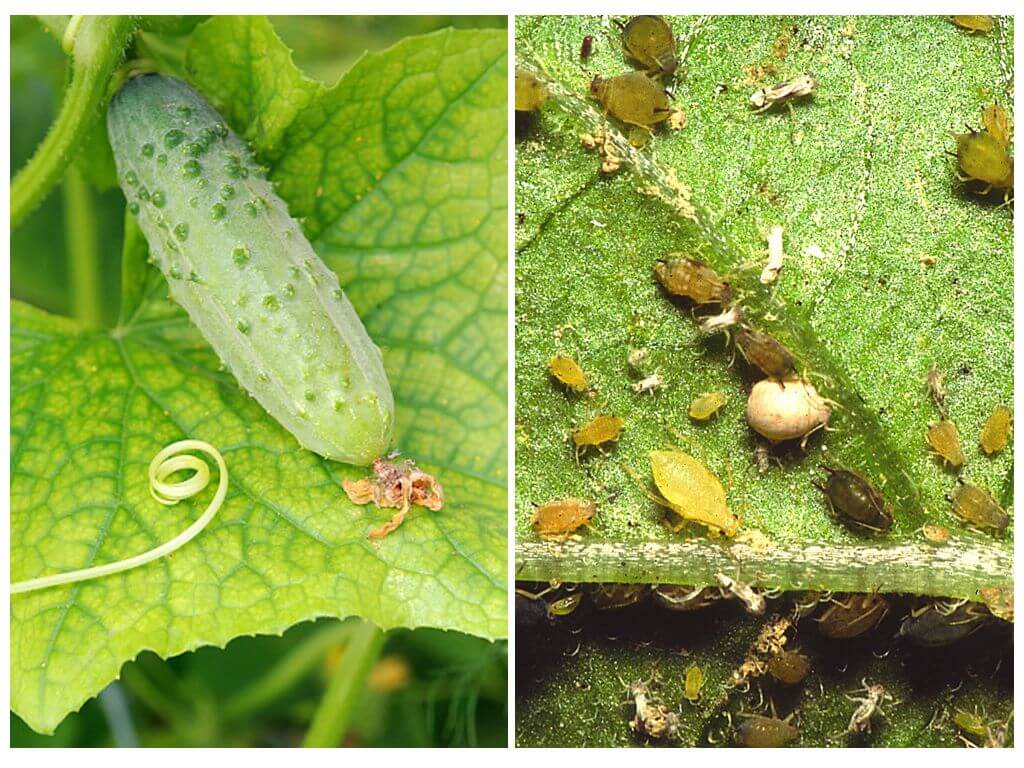
The most common type of this pest is the melon aphid, which has 2 phases of development: common and winged. Wingless individuals breed directly on plants, and winged individuals fly over a short distance, finding new places for settlement and nutrition. They live not only on cucumbers and tomatoes, but also on carrots, zucchini and pumpkin, berry bushes, so planting such crops is best placed away from each other.
Ways to fight
Aphids on cucumbers both in the greenhouse and in the open ground can provoke the death of plants in a few days: cucumber leaves turn yellow and curl, the ovaries cease to appear, the lashes become diseased. Therefore, as soon as the aphid has appeared, regular treatment should be carried out by any means: during the flowering period and during fruiting.
On a note!
In order to remove small parasites from plants, it is necessary to comprehensively use the means of struggle with ants that like to breed them. If there are anthills near the plantings of vegetables or ants are noticed, then they should also be destroyed.
Herbal remedies
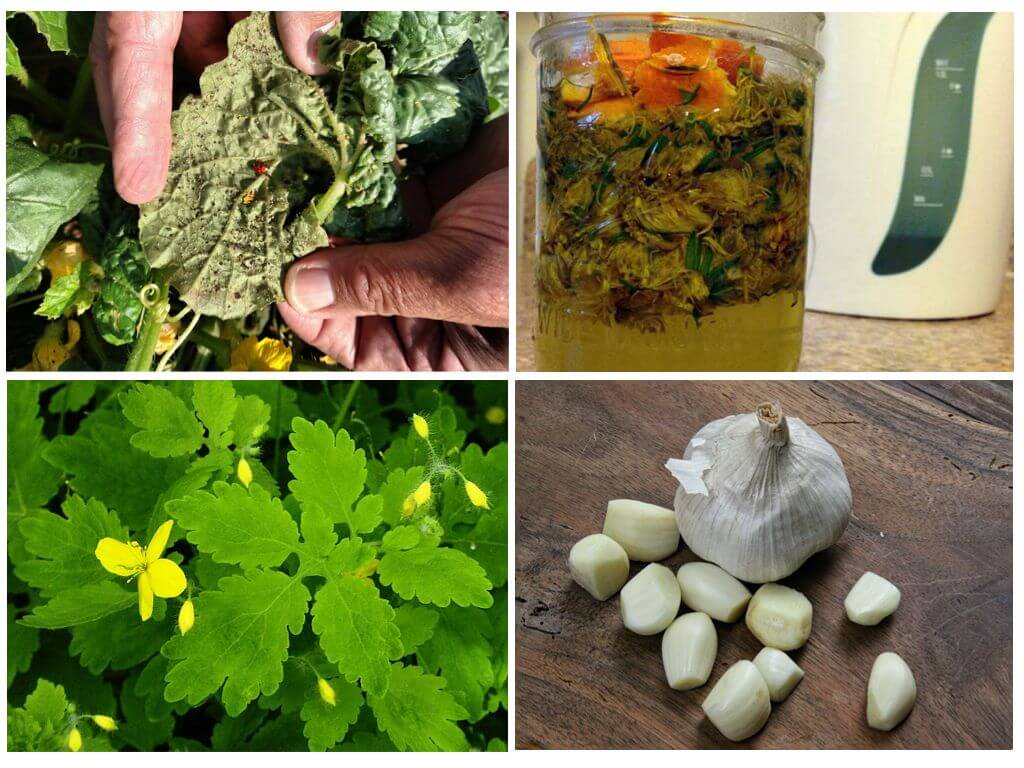
Popular folk methods that help kill aphids:
- Regular washing of the leaves on the back with a wet sponge with soapy water: this procedure should be done carefully so as not to damage the delicate lashes and shoots.The optimal bathing time is before dawn, when there is time for drying.
- Spraying cucumber plantings with dandelion infusion, for this, 500 g of roots and 500 g of shoots are poured with 3 liters of water and insisted for a day, then the filter and strain the cucumbers, using a spray bottle, paying attention to the back of the leaves. Processing is done every other day.
- Apply celandine from aphids it is possible in the form of infusion, for which 150 g of fresh or 300 g of dried leaves are taken, which are poured with 10 liters of hot water, left for a day. After filtering the obtained product, water the beds. Keep in mind the toxicity of celandine and keep small children and pets away from it.
- Sprinkle cucumbers with infusion of 1 kg of tops of tomatoes or potatoes, chopped and infused in 10 liters of hot water for several hours. To avoid leaf burns, a more concentrated solution is not recommended.
- When aphids appear on the leaves of cucumbers, processing with tincture from the husks of onions or a solution with red capsicum helps well.
- Use garlic from aphids recommended in the form of water tincture (30 g chopped garlic per bucket), infused for 2 days, then strain. The infusion of garlic is applied by treating plants with a spray.
- To spray cucumbers with water tincture of horseradish, you need to grind 7-8 roots, add 3 l of water, insist 3 hours, then the resulting product must be drained, and in the remaining cake, add liquids again, after 3 hours of infusion, drain again, mix both solutions. Before poisoning aphids, 1 tbsp. 5 ml of pure water is added from horseradish.
It is necessary to fight folk remedies with aphids in the greenhouse and in the garden regularly: in one procedure, all individuals will not disappear, so spraying must be done in several stages.
Folk methods
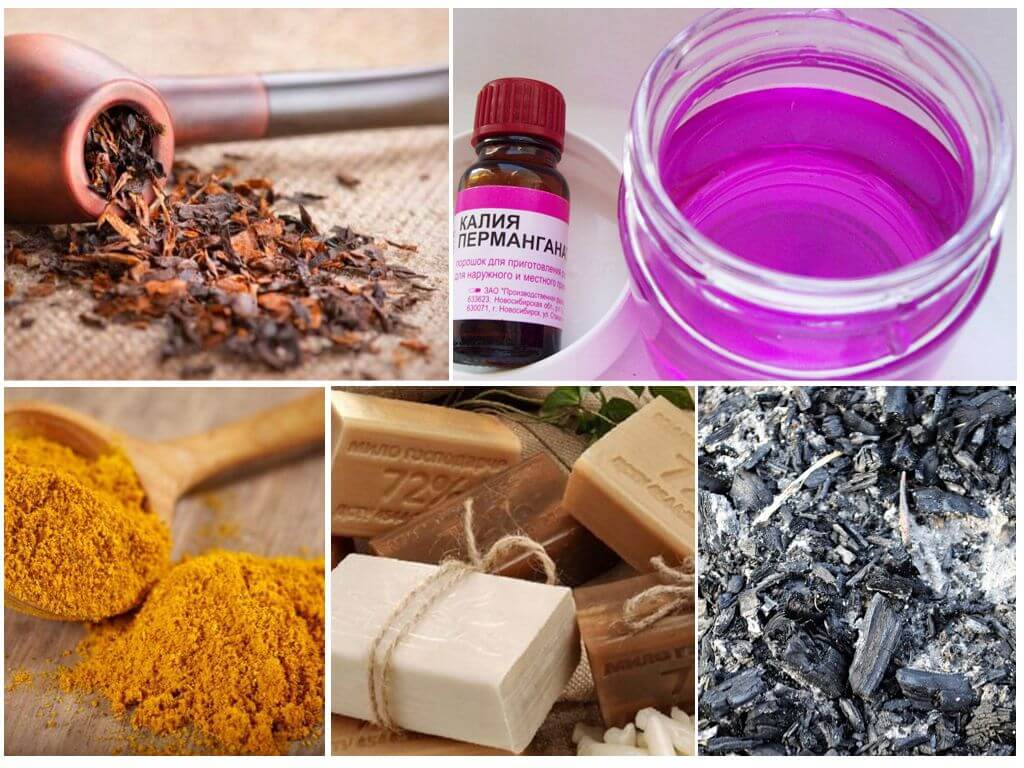
To combat aphids was more effective for better adhesion of the solution to the leaves, it is necessary to add grated soap or tar soap.
Some folk recipeshelping to remove aphids:
- 400 g shag and 80 g of soap are poured into a bucket of warm water for a day, strain and carry out processing;
- ash from aphids: 200 g of ash and 50 g of soap per 10 l of water, mix well and spray the leaves and cucumber shoots;
- 10 g mustard powder for 1 liter of water, insist 2 days, add 60 g of soap chips and 800 ml of distilled water to the resulting solution, spray the cucumbers from the spray gun;
- you can save cucumbers from the invasion of small pests using a solution of manganese in combination with laundry soap, similarly, aphid prophylaxis is carried out by using a potassium permanganate solution for watering cucumber beds.
To get rid of aphids on cucumbers, experienced gardeners and gardeners use original folk methods of combating the use of various substances and liquids that can be found in the household: soda, vinegar, manganese, vodka or moonshine, ammonia from aphids - all this quite successfully helps to cope with pests.
The fight against aphids with folk remedies that are easily prepared at home:
- Aphid ammonia it is used this way: a solution is made with 50 ml of alcohol mixed with 10 l of water, 25 g of soap are added to the leaves to stick. Used to treat the inside of the leaves and spray the entire bush. Such a tool is recommended no more than 2 times a week, the procedure is carried out in dry sunny weather.
On a note!
Using ammonia from aphids, several problems can be solved at once, because it contains nitrogen, which is widely used as a fertilizer for plants. Ammonia or ammonia has a very pungent odor, which repels pests, and spraying it with a solution fertilizes the plant with nitrogen, stimulates the growth of leaves and buds.
- One of the substances commonly used by gardeners is aphid vodka it is used in its pure form with the addition of liquid soap, you do not need to add water.
- Aphid Baking Soda it is used often enough, due to its presence in the stocks of any housewife. To prepare the mixture, 75 g of soda is mixed with a bucket of water, you can spray vegetables, bushes and fruit trees. At the same time, this solution helps in the fight against rot and powdery mildew on cucumbers.
- Use aphid vinegar many gardeners advise, for spraying 1 tbsp. vinegar is added to 1 liter of water. vinegar essence will need 1 tbsp. on a bucket of water.
- milk with iodine from aphids It is quite effectively used for processing vegetable crops, flowers and shrubs. To prepare the product, 100 g of milk, a bottle of iodine, 1 liter of water and a syringe are taken: first, 0.5 cubes of iodine are added to the milk, mixed and added to water.
- Hydrogen peroxide against aphids is a fairly popular tool that allows you to protect plants and destroy pests.
Chemicals
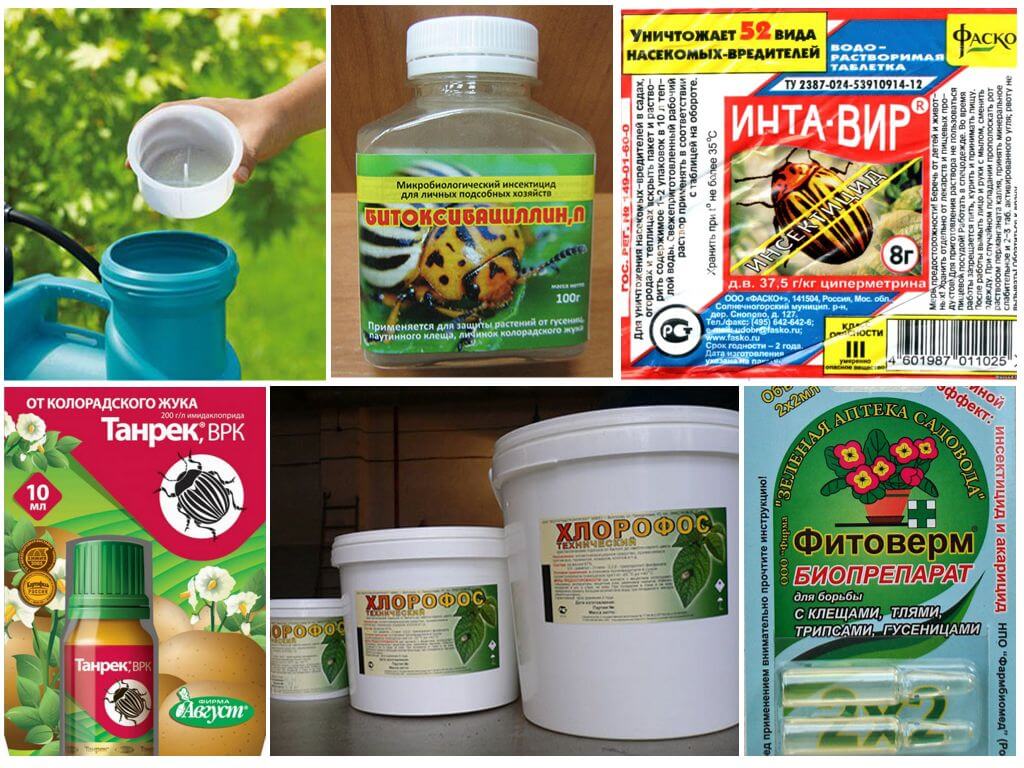
If aphids attacked plants in large quantities, the question arises of how to treat cucumbers from aphids when folk remedies do not help. There are many biological and chemical preparations that can help fight parasites with high efficiency.
Biological preparations from aphids do not pose a threat to human health, they infect an insect colony, but do not poison the fruits and ovaries:
- Entobacterin is an effective remedy for aphids on cucumbers, is produced in ampoules of 0.1 g, after processing, a pest colony becomes ill and dies after 6-7 days;
- remedy Tanrek - a harmless remedy for fruits and vegetables, can be used during fruiting, it acts detrimental on insects;
- Arrow - a drug for the destruction of melons and gourds, its effect at temperatures above 20º C begins the very next day after spraying plants, has positive feedback from gardeners.
Chemical products based on insecticides contain substances harmful to humans, therefore, after their use, it is not recommended to consume fruits for 1 month. These drugs include: Intavir,insecticide FitovermArrivo Actara drug, Spark. Before their use, all ripened fruits are removed.
The main rule in the fight against aphids on cucumber plantings is the alternation of various means, since insects quickly get used to previously used substances.
